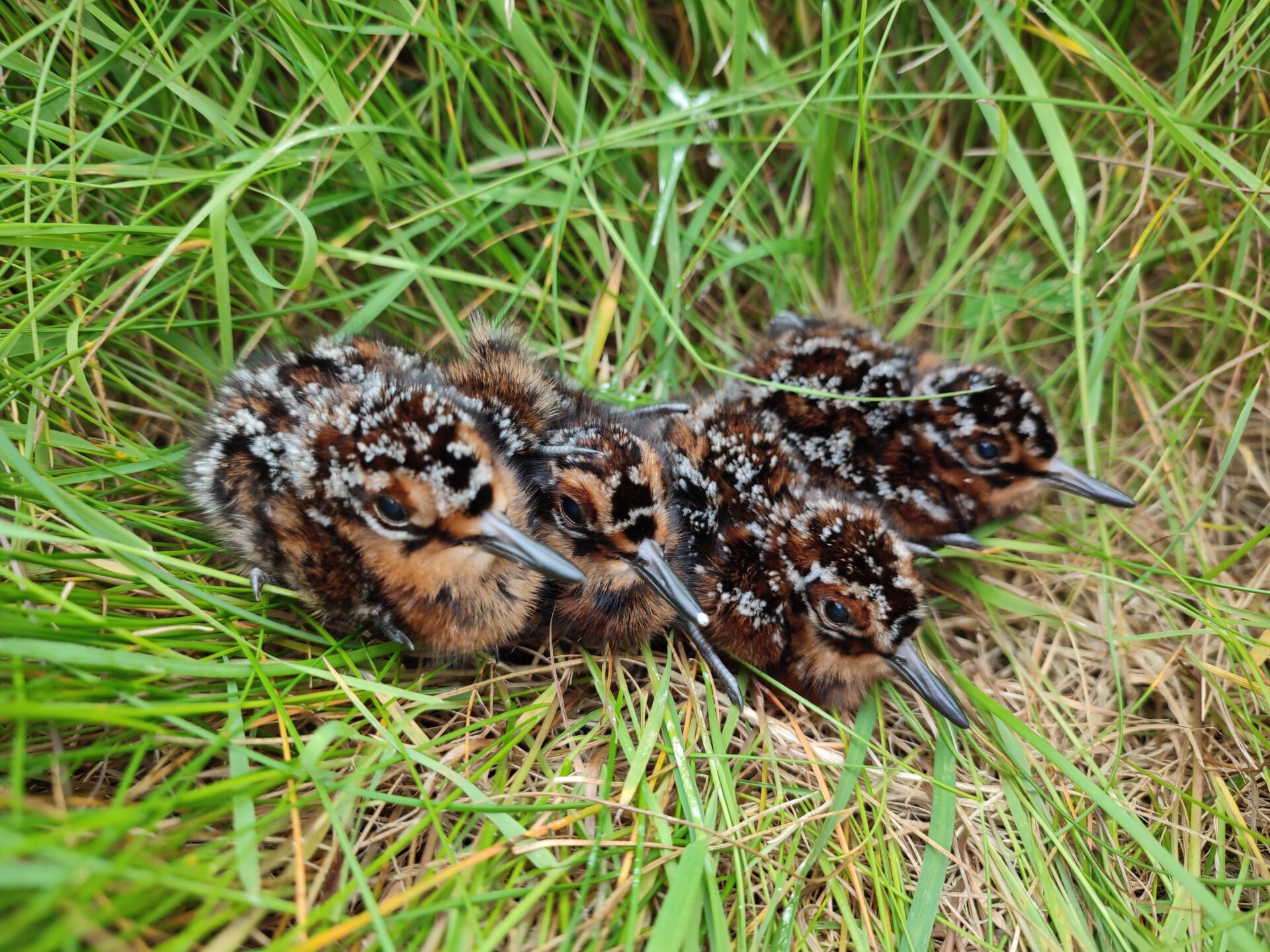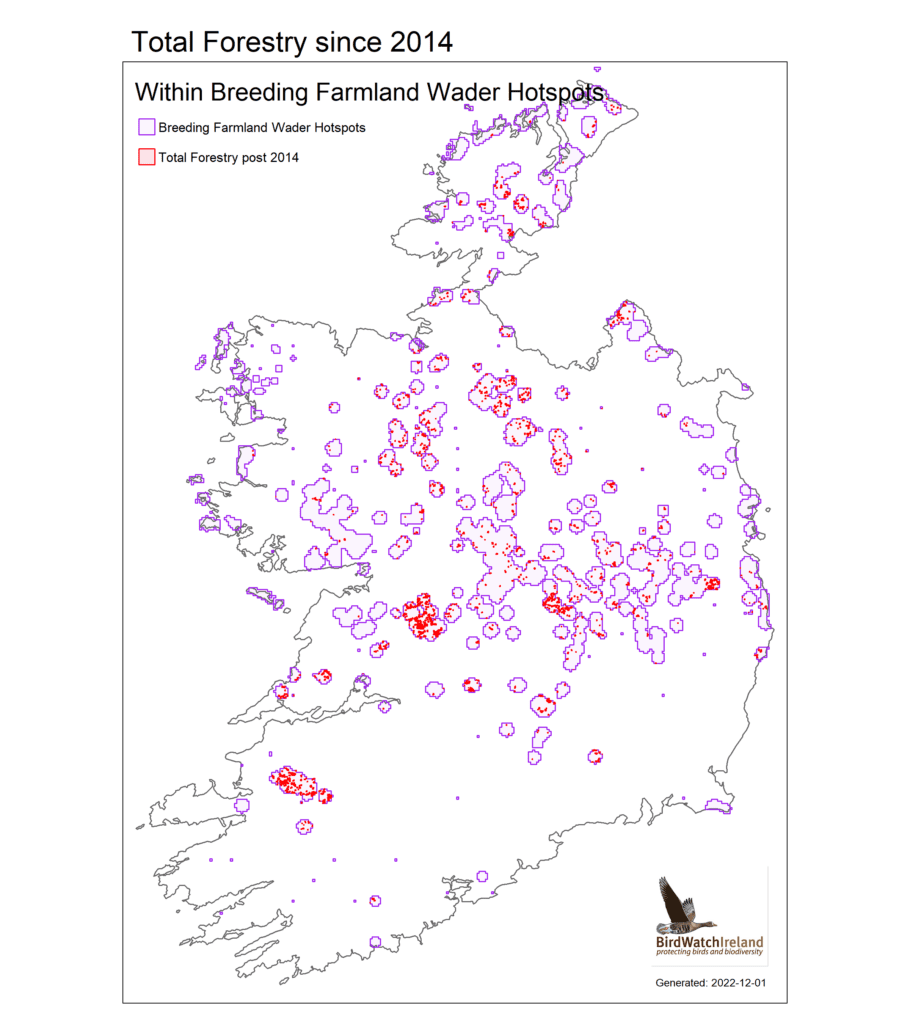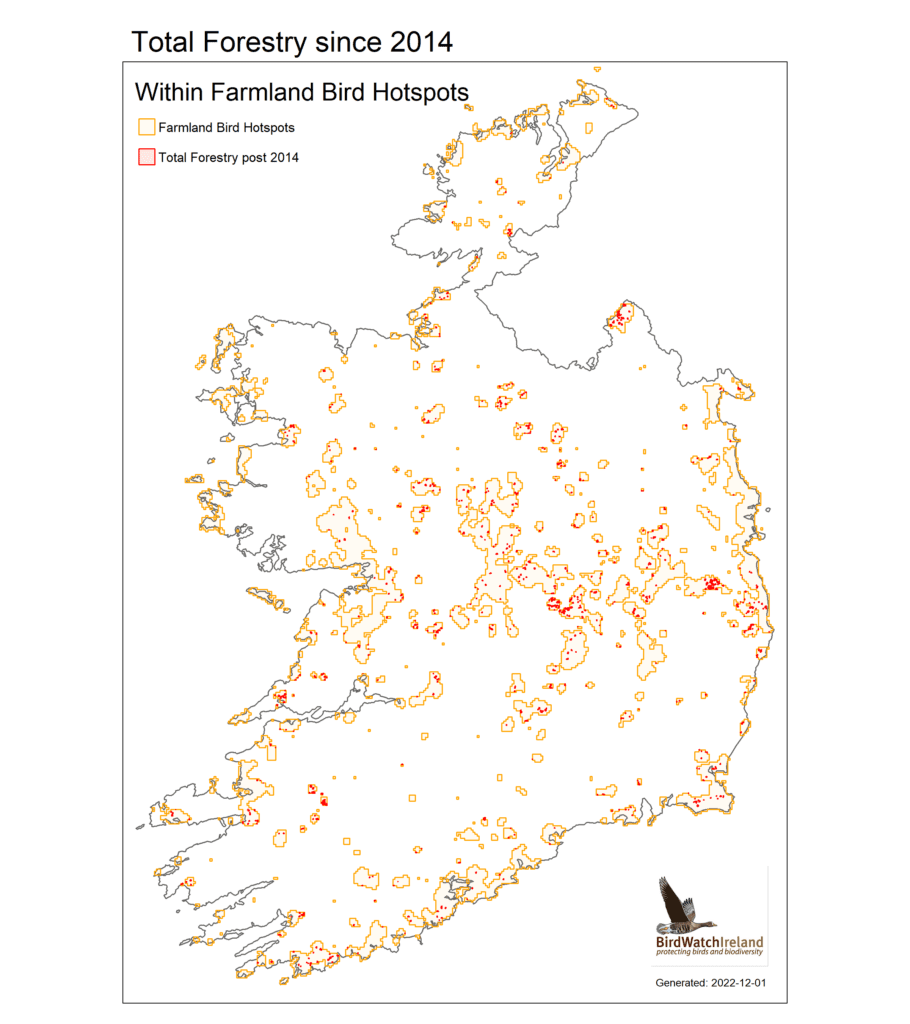Snipe chicks. Snipe is a breeding wader that is a Red-Listed Bird of Conservation Concern in Ireland.
State afforestation plans pose extinction risk to threatened farmland birds
BirdWatch Ireland calls on the Irish Government and the European Commission to ensure cast-iron safeguards to avoid tree planting on habitats of threatened bird species are integrated into new forestry programme and any State Aid consent for forestry investment.
The Irish government Forestry Programme 2014-2022 has operated in breach of the conditions of the EU State Aid consent granted to it in 2014. Afforestation has also occurred in breach of Article 4.4 of the Birds Directive.
In a submission to the draft Forest Strategy Implementation Plan 2023-2027 (new forestry programme) for which State Aid consent is being sought from the European Commission, BirdWatch Ireland has provided evidence to the Forest Service and the European Commission which indicates that the government approved the planting of forestry in environmentally unsuitable sites in breach of the conditions of the State Aid decision for the Forestry Programme 2014-2022.
BirdWatch Ireland research into how farmland bird hotspots overlap with the location of forestry planting since 2014, shows that government has given consent to :
- the planting of 13,719 hectares, or 14.1% of afforestation or replanting nationally, in hotspots for six of our most threatened breeding waders (Fig1)
Fig 1: Afforestation or replanting in breeding wader hotspots since 2014.
- the planting of 6538 hectares of forestry, or 6.7% of the total afforestation or replanting, in hotspots of 28 Red and Amber listed farmland birds (Fig2).
Fig 2: Afforestation or replanting in farmland bird hotspots since 2014.
The 2014-2022 State Aid conditions from the EU Commission required the Irish Government to ensure that:-
“Afforestation will be avoided on environmentally unsuitable sites” and “The inappropriate afforestation of sensitive habitats such as peat lands and wetlands will be avoided, as well as the negative effects on areas of high ecological value including areas under high natural value farming”. The detail on breaches of the State Aid conditions is outlined in a 2019 report by BirdWatch Ireland shared with the Irish government and the European Commission.
High nature value farmland and other areas of importance for threatened wild birds are of high ecological value. The bird species under grave threat include Curlew and other breeding waders – Redshank, Lapwing and Snipe which are on the Red List of Birds of Conservation Concern in Ireland as well as Skylark which is Amber listed; in addition, Hen Harrier, Dunlin and Golden Plover also Red Listed and listed on Annex 1 of the Birds Directive, aswell as Merlin which is Annex 1 and Amber listed, requiring EU member states to implement special measures for their protection.
Afforestation of the habitats used by birds of the open countryside results in the direct loss of habitat for these species. In addition, for those species which nest on the ground, such as Curlew and Lapwing, forested areas provide cover for predators such as foxes and corvids which take the eggs and young of these species breeding in the vicinity of the forest block. Farmland birds, particularly those nesting on ground in open landscapes are more severely threatened than any other group of birds in Ireland.
The evidence of afforestation of important areas for birds shows that the State is also breaching articles of the Birds Directive. All wild birds are protected under this Directive but the state is failing to adequately protect birds in the wider countryside outside of designated Special Protection Areas [1] and most farmland birds are declining as a result. This duty is especially important for open countryside birds which depend to a great extent on the condition of habitats in areas of high ecological value outside of SPAs.
Oonagh Duggan Head of Advocacy at BirdWatch Ireland said “The European Commission cannot in good faith give consent to the 1.3 billion euro in state aid for the new forestry programme as requested by the Irish government and ignore breaches of existing state aid conditions as well as EU environmental law. This is a 5-fold investment over the previous forestry programme and spells the deathknell for threatened farmland birds.”
She continued “the proposed new forestry programme does not contain adequate safeguards to protect habitats for breeding waders and other open countryside birds from afforestation and considering the scale of the lucrative payments available, we anticipate an accelerated loss of important habitats for wild birds and other biodiversity. We call on Ministers Hackett, McConalogue and Noonan to ensure that no further tree planting occurs in farmland bird hotspots and to adhere to EU environmental law”.
She continued “We know what needs to be done to protect the habitats of threatened species. The solution lies in the commissioning of bird afforestation sensitivity mapping as soon as possible and to ensure that maps of important areas for birds and other biodiversity are integrated into the afforestation procedures so that these areas can be safeguarded from afforestation”.
We need more trees in the Irish landscape – more native woodlands and forests to help combat climate change and for people, habitats and species, as well as for timber. And the funding for more trees is welcome. However, these benefits must not be at cost of further losses of threatened birds and biodiversity dependant on open landscapes stringent safeguards must be put in place to avoid this. In addition, we need an ambitious Nature Restoration Law which ensures the restoration of habitats for farmland birds at landscape scale and rewarding farmers financially to do this.
[1]
In particular Article 4.4 calls for the State to avoid pollution or deterioration of habitats for birds including outside of designated Special Protection Areas.
Article 4.4 of the Birds Directive :
In respect of the protection areas referred to in paragraphs 1 and 2, Member States shall take appropriate steps to avoid pollution or deterioration of habitats or any disturbances affecting the birds, in so far as these would be significant having regard to the objectives of this Article. Outside these protection areas, Member States shall also strive to avoid pollution or deterioration of habitats.


 Fig 1: Afforestation or replanting in breeding wader hotspots since 2014.
Fig 1: Afforestation or replanting in breeding wader hotspots since 2014.
